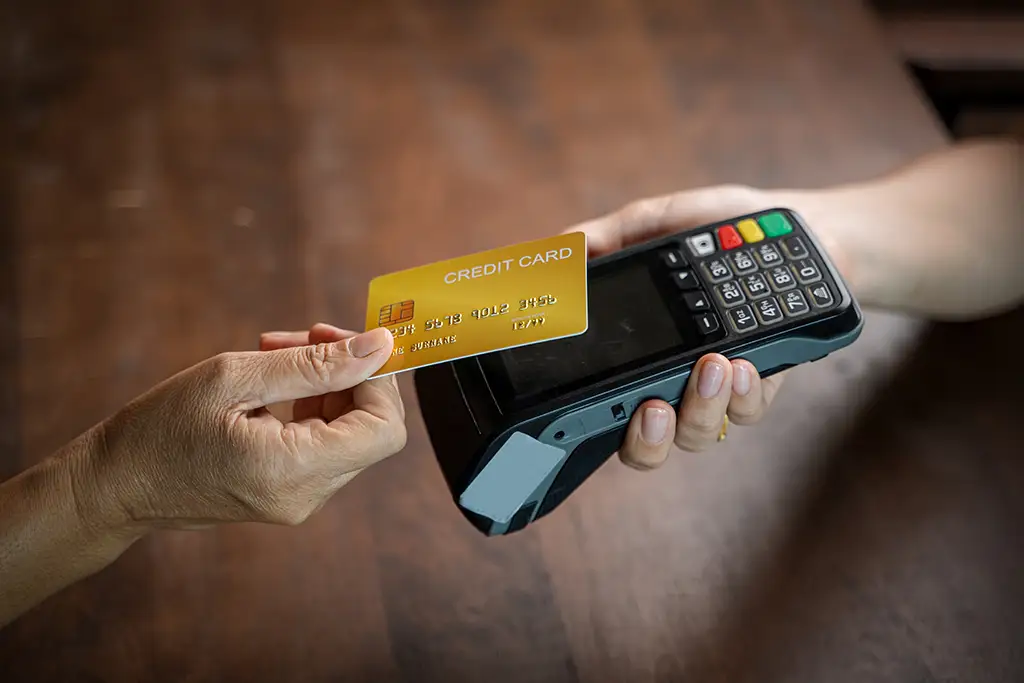No products in the cart.

In this digital age, it’s time to upgrade from pen, paper and cash and invest in useful technology like a Point of Sale (POS) system to process your sales. In this article, we will go through what a POS transaction is, its benefits and what a POS reconciliation is. How can you benefit from a POS system for sales transactions?
Contents hide
1. What is a Point of Sale (POS) transaction?
A Point of Sale transaction is defined as a payment made in exchange for goods or services, typically in a retail environment. These transactions can be in-person or online, and are usually completed using methods like cash, credit or debit cards and other cashless payment methods.
2. How do POS transactions work?
A POS transaction involves two people: a buyer and a seller. Using a POS system, a business can process transactions and collect sales data within the system for better tracking and analysis.
Here’s how it works:
- The customer browses the store and selects the items they want to purchase.
- These items are then brought to the checkout counter where the cashier scans each item using a barcode scanner connected to the POS system.
- The POS system receives the item details – like item name, quantity, price and other relevant information – and stores it in the backend.
- The system calculates the total amount owed by the customer based on the item price and any applicable discounts or taxes.
- The customer then selects and pays using an available payment method, such as cash, credit/debit card, or any other method accepted by the store.
- If the customer is paying with a credit/debit card, the POS system sends a request to the payment processor or issuing bank to authorise the payment. The payment processor verifies that the customer has sufficient funds available, and approves or declines the transaction accordingly.
- Once the transaction is approved, the POS system prints a receipt for the customer.
- The POS system then updates the store’s inventory records and the stock levels.
This infographic depicts a simplified version of the POS transaction process:

3. What are the different types of POS transactions?
Based on the channel via which the transaction occurs, Point of Sale transactions can be divided into three basic categories: online, offline and returns.
- Online Transactions
Online POS transactions often occur through an e-commerce website, or more recently, social media or messaging software. When customers visit your business’ online store and purchase items, your POS system syncs these transactions just like if the payment had been made in person. The only difference is within the transaction details.
- Offline Transactions
An offline point of sale transaction happens when a customer enters a store, selects a few products, and pays at the cash register where a POS terminal is set up. In this instance, the seller receives the money immediately and without any delay.
- Returns
Customers occasionally are unhappy with their purchases, in which case they will ask for a refund. These can be issued through a POS system, basically acting as a “reverse payment” that, instead of acquiring funds, returns them to the customer.
4. What are the benefits of POS transactions?

Conducting Point of Sale transactions isn’t just about receiving money and processing sales. Using a POS system to make sales offers many benefits that can improve the state of your operations, promote stability and allow growth opportunities.
Here are some benefits you can capitalise on with POS transactions:
1. Improved efficiency. Since the POS system automatically calculates the total amount of the purchase and processes the payment, it reduces the time and effort required to complete the transaction. This can lead to shorter wait times for customers and increased customer satisfaction.
2. Accurate sales tracking. With POS transactions, you can accurately track sales, inventory, and customer data. This data can provide valuable insights into your operations, and be used to make informed decisions about pricing, inventory management, and marketing strategies. These include identifying your best-selling products, adjusting your inventory accordingly, or tracking customer behaviour and offering targeted promotions.
3. Improved payment security. POS systems offer enhanced payment security, protecting both you and customers from fraud and theft. Security features such as chip card readers and encryption technology prevent payment data from being stolen, while end-to-end encryption ensures that all data is kept secure during the transaction process. You can build better customer trust and reduce the risk of financial loss for businesses.
4. Flexibility in payment methods. POS systems offer a wide range of payment options, including cash, credit/debit cards, mobile payments, and other electronic payment methods. This flexibility can increase customer convenience and improve business cash flow. For example, customers may prefer to pay with a credit card or mobile payment app rather than cash, and businesses that offer these options can attract more customers and increase sales.
5. Streamlined accounting. Since all of your sales, tax and financial data is automatically stored on your POS system, accounting and bookkeeping can be simplified, saving you time and reducing errors. POS systems can also integrate with accounting software, making it easier to manage expenses, payroll, and other financial tasks.
6. Enhanced customer experience. POS transactions can enhance the customer experience by providing a seamless, convenient, and personalised shopping experience. With it, you can offer targeted promotions, loyalty rewards, or other incentives to customers. You can also use self-service kiosks or online ordering to improve the convenience and speed of the shopping experience.
5. What is POS reconciliation?

The POS reconciliation process involves comparing the sales data from the POS system with the business’ financial records, such as bank statements and accounting software. Usually, when conducting POS reconciliation, you will review the daily or weekly sales totals along with bank deposits, and resolve any discrepancies. By doing so, you can ensure that all sales and payments have been accurately documented and that there are no inconsistencies or mistakes.
6. What are the benefits of POS reconciliation?
With POS reconciliation comes a multitude of benefits that can ensure your business performs well.
1. Improved accuracy and reliability. By reconciling your data, errors and discrepancies can be identified and corrected. This ensures that the financial records are accurate and reliable, and reduces the risk of errors in financial reporting.
2. Better cash flow management. Since your financials are accurate, you can better manage your cash flow and ensure that you have sufficient funds to cover expenses, investments and other overheads.
3. Enhanced fraud prevention. POS reconciliation can help you identify any discrepancies or unusual transactions indicative of fraudulent activity. Thus, you can reduce or prevent losses due to fraud, and improve payment security.
4. Improved decision-making. POS reconciliation results in accurate and up-to-date financial records, which you can then use to make informed decisions about pricing, inventory management, and other business aspects. Eventually, better decision making can lead to improved profitability and growth.
Conclusion
All in all, POS transactions don’t just allow you to manage your sales data. You can maximise POS technology to Improve your efficiency, track your sales more accurately, and most importantly, grow your business.
EPOS
If you’re in need of a new Point of Sale system in Singapore, you’re in the right place. For businesses seeking an ultra-seamless POS system that provides precise control and robust data analytics, nothing feels like an EPOS system. EPOS is one of Singapore’s leading POS system vendors, providing powerful features designed to help your business thrive by improving efficiency, reducing costs and increasing profitability. Get to know our system by signing up for a free, non-obligatory demo.
• Written by Adrija Chakravarti
Was this article helpful?
YesNo


